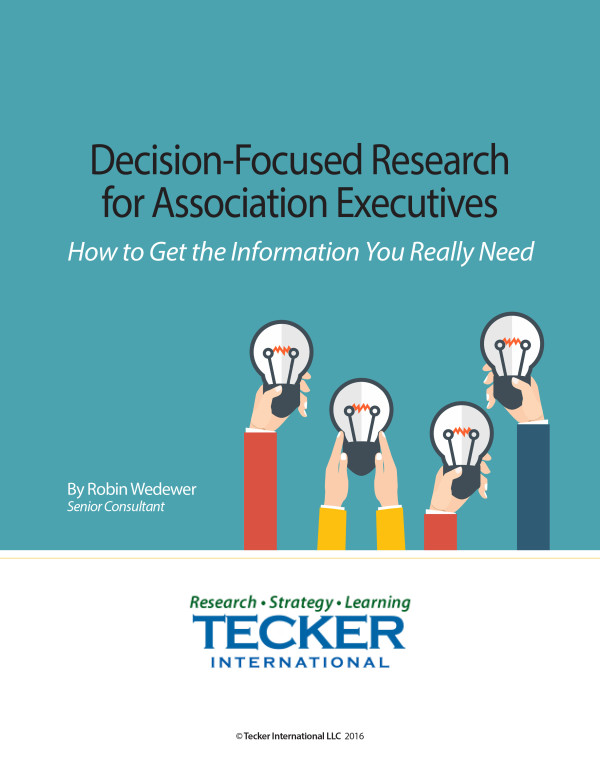“Don’t start a funeral with logistics.”
Priya Parker, author of The Art of Gathering, shares this advice in her book. We’d be wise to follow it.
Powerful (Or Simply Effective) Adult Learning Takes Some Planning
At Tecker International, many of us engage in a variety of online learning experiences regularly. We have witnessed the good, the bad, and all too often the downright blighted in these efforts.
That’s right. Blighted.
For those interested in “webinars” that are designed for learning, we observe that some of the poor or missing characteristics of many face-to-face offers have migrated to online experiences.
In other words, these aren’t necessarily new problems. But they are issues we should consider if we hope to offer better outcomes in our online learning.
Inspired by High-Quality Educators
Many association educators are doing a commendable job re-engineering learning experiences for a virtual environment.
Online activity does not easily imitate a face-to-face experience. Alternative instructional strategies are evolving to maximize effective learning. The courage to try something new is strong.
In this quest to re-engineer, staff responsible for the meeting experience and staff responsible for learning content have re-discovered that these two dimensions are fully intertwined.
Both are essential to achieve the desired outcomes.
Four Critical Components of Adult Learning
Successful programs reflect four critical components of adult learning.
What follows is extrapolated from the works of Madeline Hunter, John Dewey, and Malcolm Knowles.*
#1. Set learner-centered objectives at an appropriate level of difficulty.
For adults, this means that our focus is on what we want to have learned rather than on what we want to teach.
Modalities that can be employed virtually include:
- video
- simulation
- chat groups
- access to publications
- real-time case studies
- independent projects
Learning becomes an engaging experience rather than a passive receipt of information provided from one source.
Learner-centered objectives define what we want the learner to:
- know
- understand
- value or appreciate
- be able to do
The nature of the learning opportunity (a.k.a. instructional strategy), the sequence of content, supportive material and activities, and methods for assessing progress both during and upon the conclusion of the experience are then matched to the objective.
#2. Employ effective motivation techniques.
For adults, this means they can integrate their own experiences into the topic and immediately apply what they have learned.
By adulthood, the three basic learning styles – visual, oral, tactile – have become conscious preferences. Creating opportunities for learners to have access to their most comfortable style is, paradoxically, both challenging and more accessible in a virtual environment.
For example, using a digital whiteboard to draw a picture of something as a metaphor for successful achievement of a desired competency would reinforce learning for those who prefer a visual learning style.
#3. Consider retention strategies.
For adults, this means that “mass” and “distributed” practice are built into the examination of the subject matter over time.
When a concept is first introduced it is examined in detail for a significant period with a repeated opportunity for application. As time progresses the concept is returned to for a shorter time as a refresher.
As time continues…
(a) the periods of time between refreshers
(b) the amount of time spent on the concept are reduced until the concept has been fully mastered
Now, the learner can recall and apply the concept as a matter of course.
This is a greater challenge in virtual learning environments. In the virtual world the limited intellectual, emotional, and physical capacity of humans to comfortably be online causes examination of the topic to be shallower and of shorter duration.
This is particularly a problem when what is being studied is one component of a more complex concept or competence; when each part makes sense only when understood within a larger total framework. When concepts or competencies are addressed in short shallow bursts of exposure they tend not to be retained over time or applied in an effective fashion.
For example, “TED Talks” inform and entertain, but they do not educate or enable.
#4. Monitor learning constantly and adjust accordingly.
Always challenging with adult learners, the ability to quickly pivot to different content or instructional strategy is more difficult in a virtual environment.
Face-to-face experiences in real-time provide feedback that allows a more natural interface between monitoring and adjustment. This interface is less fluid and less easily adjusted in a virtual environment, especially when instructional episodes are pre-recorded to provide for consistency in use or to avoid technical problems or unedited blunders.
Bringing It All Together
The four components can serve two purposes.
First, they can serve as a set of design specifications for learning experiences.
Second, they can serve as evaluation criteria for assessing the probable success of an instructional design.
If something more than “time in seat” or “exposure to content” is important, then the approach to assessment needs to match the learning objectives. What content was supposed to be mastered?
Measurement by written examination or demonstration after the learning experience has been completed (summative evaluation) is of less value than periodic assessment (formative evaluation) that enables the learner to self-remediate areas of weakness. Adult learners often find this capability especially meaningful and attractive when the award of a certificate, digital badge, certification, or license is at stake.
As has always been the case with adult education, continuous improvement, not perfection is the necessary commitment to finding the right balance between a learning session experience and content.
*The absence of these considerations is one tip-off that the primary intent of the “program” is really promotional and not educational.
Enjoy this content? Please share it with a colleague, email us, or share on Twitter (and be sure to tag us @TeckerIntl)!




